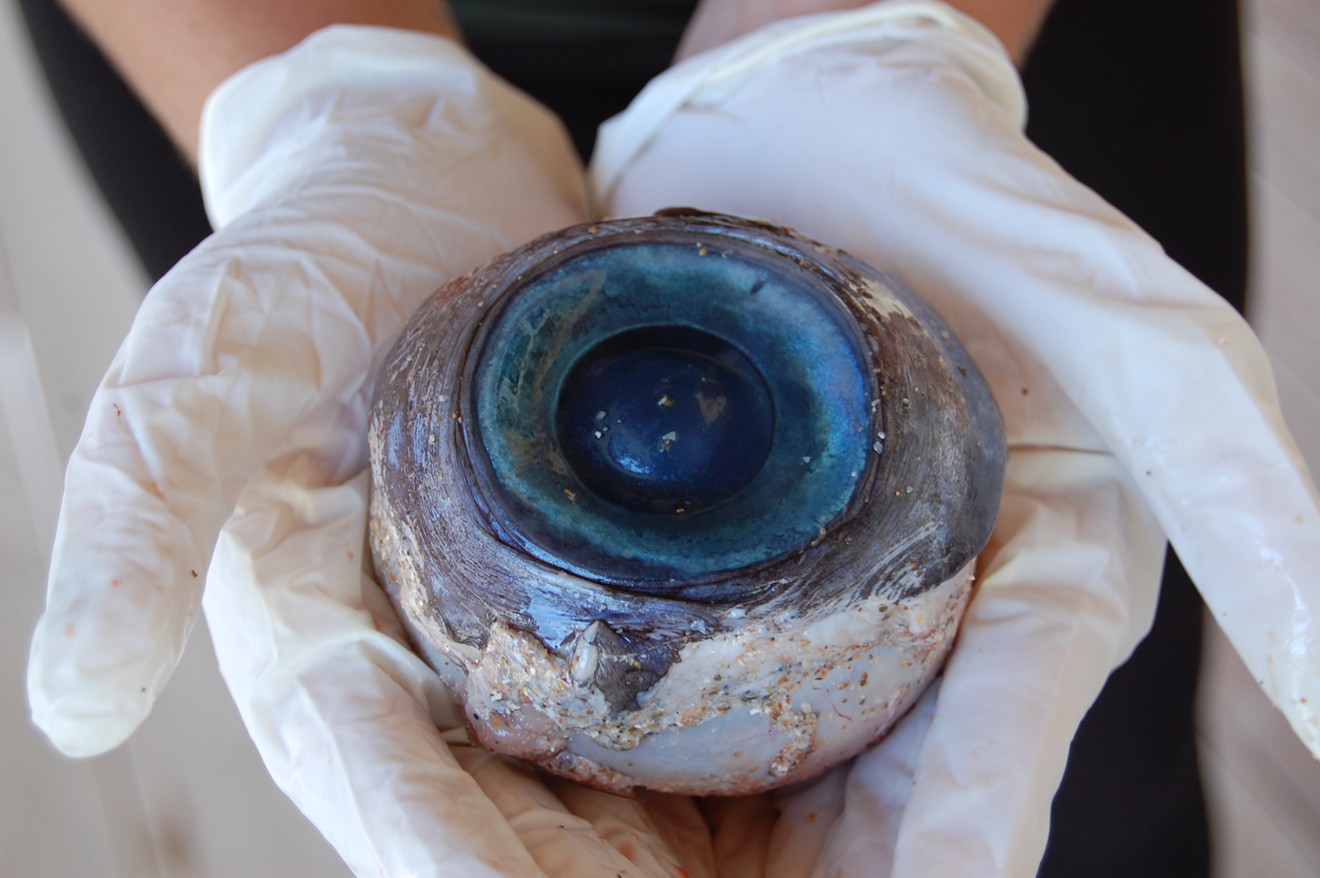Sometimes the stories make you uncomfortable. Sometimes they make you feel sad or sick or a bit of both. And sometimes they remind you of the wildness and richness of this state's history, for good and bad. One way or another, though, the stories will have you thinking, Ah, yes, Florida. Here are the ten weirdest things that have washed up on Florida's beaches.

Coast Guardsmen unload part of a single seizure that amounted to two tons of cocaine.
Via US Department of Defense

Nothing to see here, just a military-grade phosphorous flare lying around on one of the most popular beaches in the state.
Via Miami Beach Police Department Twitter
8. Dead people. This one is both sad and unnerving. Waterlogged bodies regularly show up on Florida beaches, from Miami, such as this corpse that came ashore near 39th Street last January, to Ocean Ridge, where the body of Amantay Brown washed up this past October, and well up into the Gulf Coast at an alarming rate. There are truly too many to list, and that's not the kind of thing you can say about most seaside tourist destinations.
7. Severed limbs. While we're on the subject of the grimmer things that have wound up in the Florida surf, it's worth mentioning that time in 2012 when an unsuspecting Canadian tourist found a severed leg on a beach in St. Petersburg. The leg wound up belonging to 38-year-old Kelly Moriarty, who had been missing for three months. Perhaps sadder still is the fact that it was not an isolated incident.
6. Wildlife. On its face, the idea of animals winding up onshore doesn't seem all that weird. After all, animals live in the ocean — sometimes they might wander a little far afield. But some of the creatures that have wound up on the beach have been more than a little on the odd side. Sometimes the animals in question have been found alive, such as the full-grown crocodile that was videotaped meandering along Hollywood Beach and the alligator that the Miami Beach Police Department caught near the South Pointe Pier. But just as often, the poor critters have shown up dead, and it isn't always clear how or why. Thousands of dead bees washed ashore in Naples; a shark showed up on the sands of New Smyrna Beach after something had eaten the rear half of its body; scores of brittle starfish died along the coast of the Panhandle; and a baby sperm whale surfaced in Deerfield Beach. It's as if Florida is a dumping ground for the ocean's dead detritus — which segues neatly to the next point.
5. An enormous blue eyeball. In 2012, a monstrous blue eyeball about the size of a grapefruit was discovered in the sand on Pompano Beach. It puzzled a lot of people because nobody could figure out what creature the eye had belonged to. The story of the mystery eyeball wound up being National Geographic's pick for the weirdest news story of the year. The Florida Fish and Wildlife Conservation Commission eventually confirmed the eye came from a swordfish. Anticlimactic? Yes. Unusual? Also yes. What happened to the rest of the fish?

Our beaches are literally covered with espresso — that's how much we like our café.
Via Scott Akerman
3. Tires. In the 1970s, the State of Florida, in its infinite wisdom, took on a project to build an artificial reef off the coast of Fort Lauderdale by dumping 2 million tires into the ocean. The idea was that coral would grow on the tires and fish would come for the coral and people would come for the fish. The state could boost tourism and get rid of its garbage at the same time. Naturally, none of that happened. The tires not only were 100 percent ineffective as a place for coral to grow, but also essentially ensured the area they were dropped would remain uninhabitable. And to remind Florida of this extraordinary act of stupidity, these tires make their way ashore whenever a strong storm such as Hurricane Irma or Wilma gets the wheels rolling back to where they began.
2. Eight-foot-tall Lego men. A Dutch artist who goes by the name "Ego Leonard" is very likely responsible for the appearance of giant plastic Lego men that have been found on a few beaches around the world sporting mischievous smiles and shirts with sayings that make little sense. In 2011, one such figure showed up on Siesta Key in Sarasota wearing a green shirt that read, "No real than you are." Florida's marooned Lego man had the distinction of earning the number two slot on Time's "Top 10 Oddball News Stories of 2011," so he's got that going for him.

The Last One, one of countless boats that brought Cuban refugees to the United States during the Mariel Boatlift.
Via Florida Keys Public Library

















